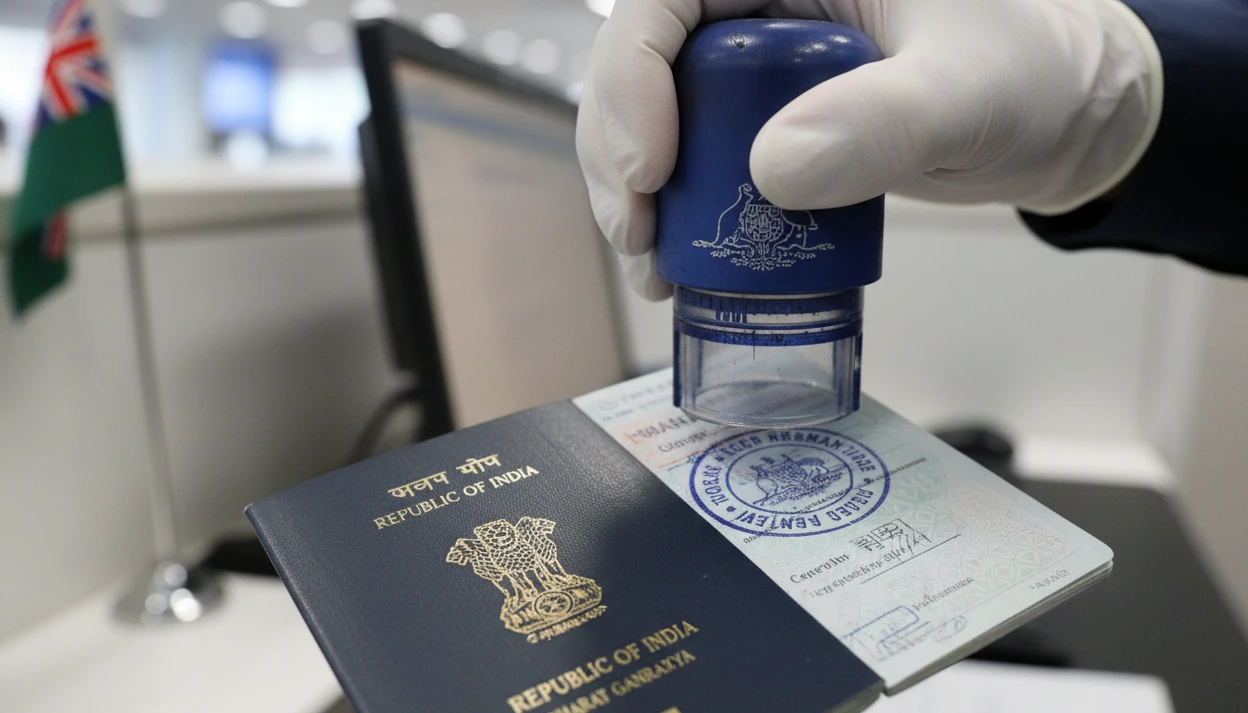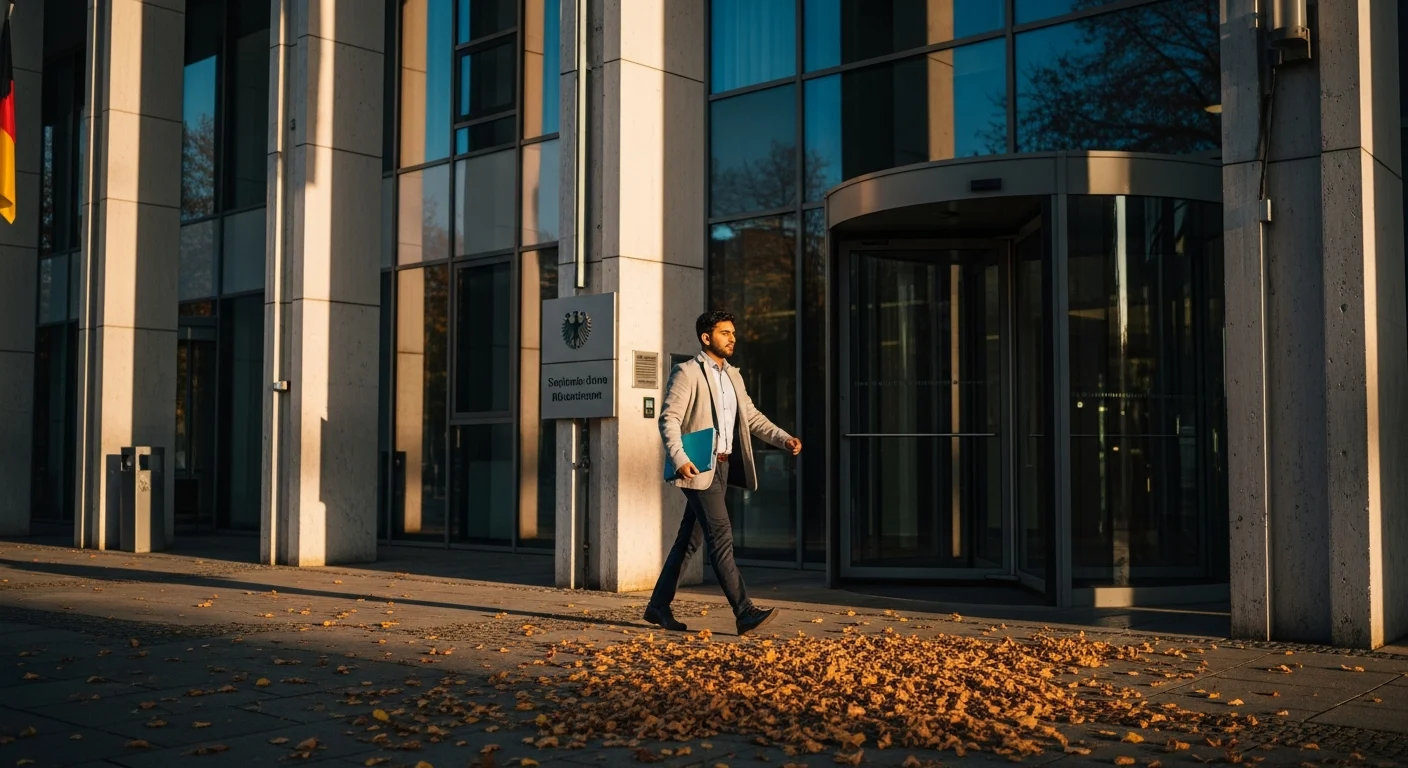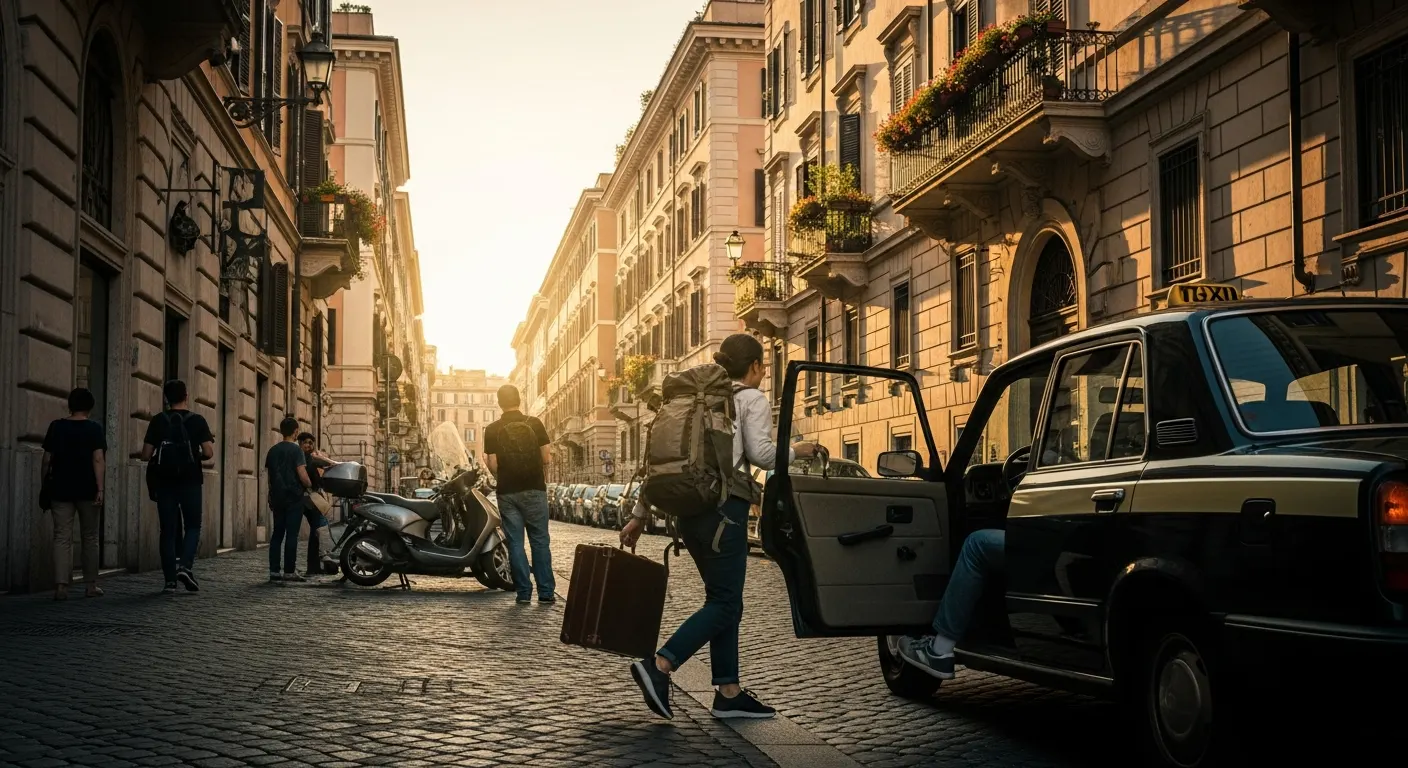Australia Tourist Visa from India: Is Onward Ticket Actually Required?
You want a straight answer first. For Australia’s Visitor (subclass 600), you don’t need a fully paid return ticket at the visa application stage. What you do need is credible proof that you plan to leave on time, such as a dummy ticket. Airlines are stricter. At check-in in India, many carriers ask to see a return or onward plan before they let you board. Australian officers can also question your exit plans on arrival. That’s the practical split. The visa decision weighs your intentions. For more details on visa processes, check our FAQ.
The airline protects itself. We’ll help you cover both. You’ll learn how to show return intent that aligns with your stay, funds, and accommodation, and how to choose between refundable returns, flexible fares, or time-limited reservations, with a verifiable PNR, so you travel confidently without overspending. Need verifiable onward proof today? Dummy ticket booking gets you a live PNR in minutes. If you're new to this, explore our blogs for tips on travel planning.
No — the Australia Subclass 600 Tourist Visa does not require you to buy a full return ticket before approval. However, the Department of Home Affairs and airport immigration frequently request proof of onward travel to confirm that Indian travelers intend to leave Australia before their visa expires. A verifiable onward ticket (dummy return ticket with a real PNR) is fully acceptable as proof of travel intent and prevents risks of delay or refusal under “unclear travel plans.” Platforms like DummyFlights.com provide instant, PNR-verified onward reservations that match Australian immigration expectations without requiring you to purchase expensive flights upfront.
Last updated: November 2025 — verified with Australia DHA & airport immigration guidelines for Indian travelers.
Understanding these requirements is crucial for Indian travelers applying for an Australian tourist visa. Learn about our About Us page to see how we support seamless travel documentation.
Visa Stage Vs. Airline And Immigration: Who Actually Checks Your Return Plans?
You already know the basics. What matters now is who asks for what, and when. Think of it as two checkpoints. The visa officer wants proof that you intend to leave. The airline and border officers want assurance that you actually will. Not ready to pay for a return? Book a dummy ticket and keep your plans flexible. This approach ensures compliance without financial commitment, especially useful for first-time applicants from India.
Start With The Clear Split
For the Visitor (subclass 600) application, you are not required to upload a fully paid return ticket. You are expected to show a believable plan to exit Australia within your allowed stay. That can be a round trip, an onward sector to another country, or a reservation that proves intent. Expanding on this, many applicants use temporary bookings to demonstrate intent, avoiding the need for immediate full payments.
At the airport in India, airlines often ask to see a return or onward plan before issuing a boarding pass. On arrival, Australian officers may also ask how and when you will depart. If your story is consistent, you sail through. If it is vague or contradictory, you face more questions. To avoid delays, preparing documentation in advance, including potential dummy tickets, is advisable.
Why Airlines Care Even If Your Australian Visa Was Granted
Airlines face penalties if they transport passengers who are refused entry. That is why check-in agents in Delhi, Mumbai, Bengaluru, Hyderabad, and other hubs sometimes verify onward travel. They are not re-deciding your visa. They are checking carrier compliance. Clear proof saves time at the counter and prevents last-minute ticket purchases at premium prices. According to IATA guidelines, carriers must ensure passengers meet entry requirements to avoid fines.
The Genuine Visitor Test After You Pay Australia Visa Fees
Home Affairs looks for a simple outcome. You visit, you enjoy your trip, and you leave as promised. Your proof of return plans strengthens this assessment by lining up with:
- Length of Stay: Your exit date fits inside the visa validity and the period you claimed.
- Funds: Bank statements or sponsor support can cover the stay and the flights you are showing.
- Itinerary: Cities and dates add up logically. No unexplained gaps.
- Accommodation: Confirmations match the same window as your flights.
- Ties to India: Employment, semester calendars, family responsibilities, or property keep you grounded here.
When these pieces support each other, the application reads strong and organized. For Indian applicants, emphasizing strong ties like ongoing employment or family obligations can significantly boost approval chances.
What Officers And Gate Agents Actually Look For
You do not need to overthink it. Focus on two filters.
- Consistency: Passport name matches the booking. Dates align across flights, hotels, and statements. Your exit timeline sits inside visa rules.
- Plausibility: The plan makes sense for your budget and purpose. A backpacker itinerary looks different from a family holiday. Both can be credible when the details agree.
If something feels off, fix it before you submit or fly. It is easier than explaining contradictions at a busy counter. Regularly reviewing your documents against the official Australian visa checklist can prevent such issues.
Proof That Usually Works Without Burning Cash
You have several practical ways to show return intent without locking yourself into a nonrefundable purchase.
- Refundable Round Trip: Book a fare that can be cancelled or changed. Keep a screenshot of the refund rules and the fare class.
- Flexible Tickets: Pay a little more for changeable dates. Useful if your decision timeline is uncertain.
- Time-Limited Reservations With A Live PNR: A reservation that can be verified in an airline system. This is ideal when you only need to evidence plans for the application, biometrics, or check-in.
Whichever path you choose, make sure the itinerary displays your full name as per passport, realistic dates, and a route that explains how you exit Australia. Services specializing in such reservations ensure quick issuance and verification.
India-Specific Situations Where People Slip Up
We see the same avoidable mistakes again and again. Use this list as a quick self-check.
- Return After Visa Validity: Your onward date must land within the permitted period. Build in a buffer for internal travel or delays.
- Name Mismatch: Even a minor spelling variation can trigger manual checks. Match your passport fields exactly.
- Funds That Do Not Match The Story: If your plan shows Sydney, Melbourne, and Cairns, your budget should reflect domestic flights and longer stays.
- Open-Jaw Confusion: If you enter Australia and exit from New Zealand or Singapore, show both the exit from Australia and the final leg back to India.
- Gaps Between Sectors: If you are flying in from a non-metro Indian city, make sure your domestic connection aligns with the international ticket and gives enough minimum connection time.
- Expired Holds: Time-limited reservations can lapse. If they do, reissue one with the same key dates and details. Do not show an outdated PNR at the counter.
Common pitfalls like these are easily avoided with thorough preparation. Indian travelers often overlook the impact of festival seasons on flight availability, which can exacerbate connection issues.
Students, First-Timers, Families, And Digital Nomads
Different profiles need different emphasis, but the principle stays the same.
- Students: Align exit dates with semester breaks or orientation. Add a short letter from your institution if timing is tight.
- First-Time Applicants: Keep it simple. One or two cities, clear dates, and a return that sits comfortably before the visa end.
- Family Visitors: Keep all passengers on the same return date or explain any staggered exits with accommodation and funds for each traveler.
- Digital Nomads and Remote Workers: Show an exit plan that respects your remote work policy and visa conditions. Avoid itineraries that imply long-term stay beyond tourist intent.
For students, integrating academic calendars not only aids visa approval but also aligns with airline check-in expectations.
Make Consistency Your Superpower
Before you submit or fly, open your documents side by side. Check name spellings, dates, flight numbers, hotel windows, and bank statements. If anything clashes, fix it now. Consistency is what convinces both the visa officer and the check-in agent that your plan is real and that you will depart on time. This step-by-step verification process is a game-changer for stress-free travel.
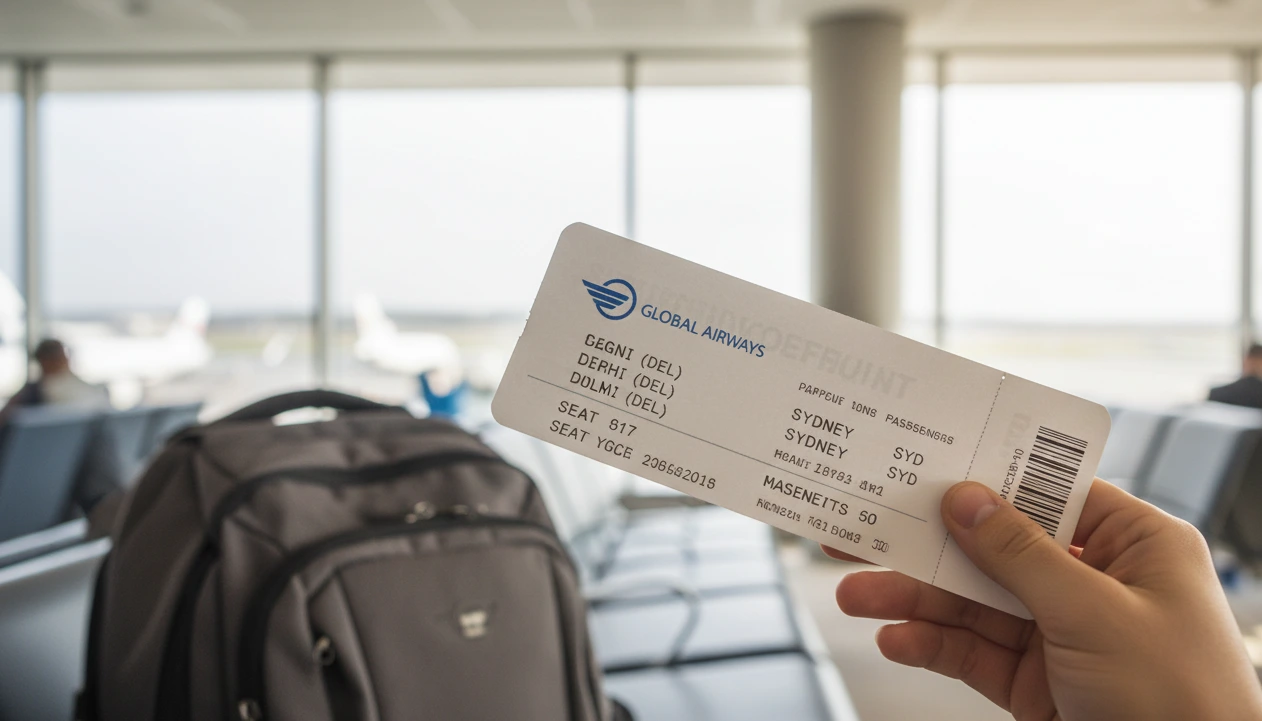
Proving Onward Travel Without Burning Cash
You want a plan that satisfies the visa file, keeps airlines happy, and protects your wallet. The trick is picking the right kind of proof for where you are in the process. Make your visa file complete—dummy ticket booking that matches your dates and passport name. This method is particularly popular among budget-conscious Indian travelers seeking Australian visas.
Refundable Round Trip When Your Dates Are Firm
A refundable return works well if your travel window is fixed and fares are rising.
- Check the fare brand and refund rules before you pay. Take screenshots of the policy and the booking class.
- Confirm how your Indian bank or card handles international refunds. Some take 7 to 14 business days to be credited back.
- Keep the itinerary simple. India to Australia and back to India on the same PNR is easier for agents to verify.
- If you cancel after the visa decision, file the refund request promptly and keep the email trail.
When to skip this option: if your visa timing is uncertain or you plan a multi-country loop that may shift by a week. In such cases, opting for a dummy ticket provides the flexibility needed without upfront costs.
Flexible Or Changeable Fares For Moving Pieces
If you know the month but not the exact day, a flexible ticket can save stress.
- Compare total cost, not just the change fee. Many fares charge the difference in price on top of a service fee.
- Choose a fare with free date changes within the same cabin. That gives you control if processing moves faster or slower than expected.
- Pair the ticket with cancellable hotels. Let your itinerary breathe while still looking complete on paper.
This option suits students awaiting exam dates, families syncing school holidays, and remote workers waiting on client approvals. For Indian families, coordinating with school calendars during Diwali or summer breaks is essential.
Time-Limited Reservations With A Verifiable PNR
When you only need to evidence exit plans, a time-limited reservation is efficient and accepted by most counters.
What it must show:
- A live, verifiable PNR that resolves in an airline system.
- Exact passport names in the correct order.
- Dates that sit inside your intended stay and visa validity.
- A logical route. For example, BOM to SYD to AKL if you continue to New Zealand.
Typical validity windows:
- Many GDS hold sit for several days. Some last up to 14 days, depending on airline rules.
- Short e-ticket style reservations may sit for 24 to 48 hours if issued as a temporary record.
- If your hold is expiring, reissue with the same core details. Do not present an expired PNR at check-in.
Use case:
- You are filing online and need proof of return intent today.
- Your biometrics appointment is tomorrow, and you want the file to look complete.
- Your airline asks to see onward proof at the counter, and you are not ready to buy a nonrefundable fare.
These reservations are a staple for visa applications, offering a bridge between intent and final booking.
Keep The Paper Trail Clean And Consistent
Small mismatches trigger big questions. Do a quick audit before you submit or fly.
- Names: match your passport exactly, including middle names.
- Dates: arrival, internal flights, and departure must fit under visa conditions.
- Accommodation: windows should line up with the flight plan.
- Funds: statements should cover domestic hops like SYD to MEL if you list them.
- Ticket logic: if you exit to Singapore or New Zealand, include that segment plus the eventual leg back to India.
Create a one-page itinerary summary with city-by-city dates, flight numbers, and booking references. It helps counter-scanning your plan fast. Digital tools like PDF mergers can streamline this for mobile access.
India-Centric Booking Tips That Save You Money
You can avoid avoidable costs with a little planning.
- Search ex-Metro and ex-Tier 2 separately. Sometimes connecting in Mumbai or Delhi is cheaper than a through fare from a smaller city.
- For flexible tickets, call the airline to confirm change fees for India-issued bookings. Policies can differ from global sites.
- Consider mixed carriers only if verification stays easy. A single PNR is cleaner than two separate bookings when agents are busy.
Additionally, monitoring rupee fluctuations against the AUD can optimize booking times for cost savings.
Try DummyFlights.com: When A Reservation Service Makes Sense
If you just need a live, verifiable reservation to evidence your exit plan, using a dedicated service like DummyFlights.com can be the simplest path. We provide reservations with a real PNR for 15 dollars, usually delivered instantly as a PDF. It is handy when you are not ready to commit to a paid return but still need compliant paperwork for the visa file or a check-in request. You can adjust dates if your plans shift, so your documents stay aligned. Use this only where it fits the story you are presenting. 👉 Order your dummy ticket today.
Handling Expiry, Reissues, And Date Changes
Reservations and holds can lapse. That is normal. What matters is how you manage it.
- Track validity. Put a reminder on your phone 24 hours before the hold ends.
- Reissue with matching details. Same names, same route, revised dates inside visa conditions.
- Update hotels after you move the flights. Keep the timeline tight and logical.
- Keep old PDFs in a separate folder so you never mix them with the current set.
If you are asked to buy a ticket on the spot at the gate, pause and check:
- Is there a fully refundable fare in the same cabin?
- Will your card limit handle a short-term hold for the refund window?
- Is a short onward sector to a third country cheaper and equally acceptable for exit proof?
Proactive management like this ensures minimal disruptions, especially during peak travel seasons from India.
Quick Wins For Students, Families, And Remote Workers
- Students: align your exit with class start or exam schedules. Add a brief letter or timetable if helpful.
- Families: keep everyone on the same return unless a clear reason exists. Carry printouts for each traveler.
- Digital nomads: show an exit that respects tourist rules. Avoid long stays that look like slow relocation.
Pick the proof that matches your stage, protect your cash, and keep every document telling the same story. That is how you satisfy the visa file, the airline counter, and the officer at arrivals in one clean move. Tailoring these strategies to individual profiles enhances overall success rates.
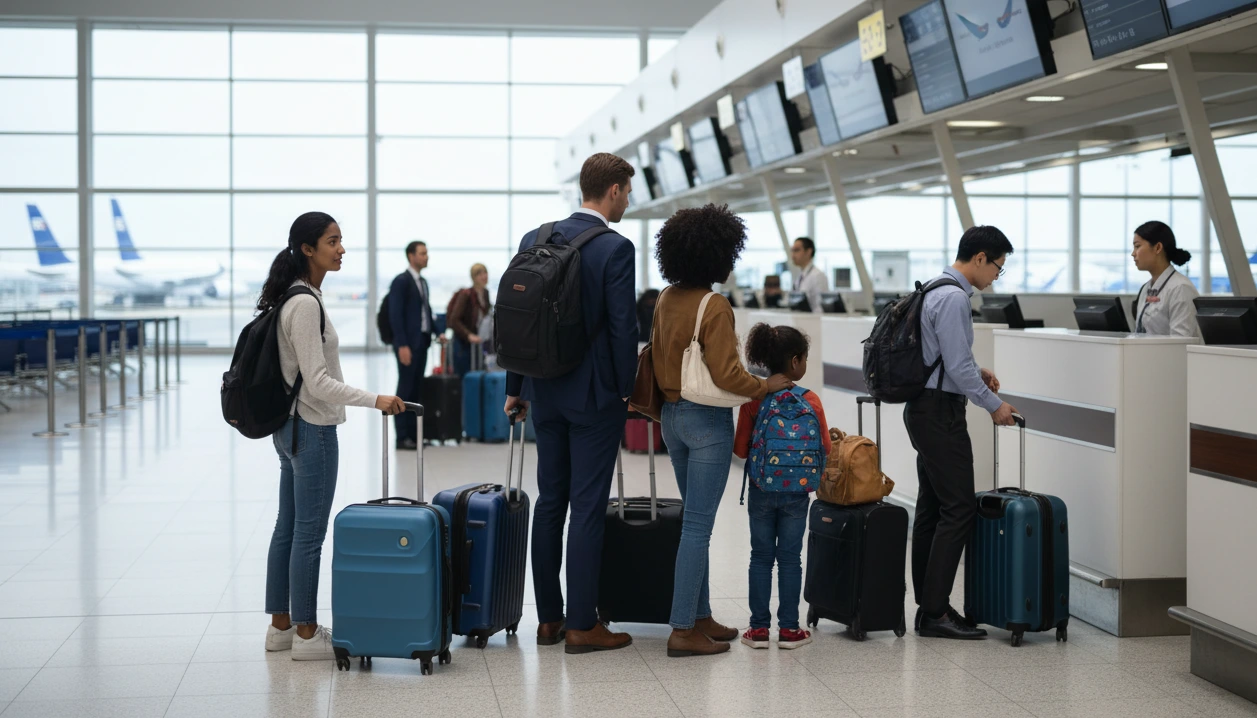
Real Itineraries That Sail Through Checks, From One-Way Plans To Multi-Country Loops
Your plan should read like a trip a real person would take. Keep the story clear, match your dates, and show how you leave on time. The examples below cover the situations Indian travellers ask us about most. At check-in, show confidence with a dummy ticket booking you can present on phone or print. These real-world examples demonstrate how integrating a dummy ticket simplifies the process.
One-Way In, Clear Exit Out
You can enter on a one-way sector if you show a credible onward plan before your allowed stay in Australia ends. Pair your arrival with a reservation or ticket from Sydney or Melbourne to a third country, then the final leg to India. Keep the passenger names, dates, and flight tickets consistent with your valid passport and application.
If you hold a visitor visa, ensure your onward dates sit inside the permission on your current visa. A neat summary page helps. Include cities, flight numbers, and the PNR, along with the address of your first stay. If you are travelling to Australia with friends or a family member, keep everyone’s exits aligned or explain any staggered returns with accommodation and sufficient funds proof. For one-way entries, a dummy ticket for the onward leg is often sufficient and cost-effective.
Australia, Plus New Zealand, Or Southeast Asia
Trans-Tasman or ASEAN hops are common for Indian travellers who want to visit Australia and another country in one trip. Show both the exit from Australia and the final sector back to India. If you fly India → Sydney → Auckland → India, the onward proof from Australia to New Zealand should be easy to verify and inside your visa window.
Check each country’s visa requirements separately. Some routes work better with a temporary visa timeline and known medical requirements. Add additional documents like hotel confirmations or a tour voucher if it strengthens the story. If you booked a non-changeable segment with a low-cost airline, make sure your dates are already firm. Multi-destination trips benefit greatly from flexible dummy ticket options to cover varying visa timelines.
Multi-City Inside Australia Without The Paperwork Headache
A Sydney, Melbourne, Brisbane triangle is fine when it looks realistic. Keep the domestic hops short and the budget sensible. Your funds should match the cities you list, not just the first stop. If you add Cairns or Perth, place them logically and leave a buffer before your departure day.
Use one PNR for India–Australia return when possible. It is cleaner at check-in. If you split carriers, carry all the information needed to verify the bookings. Reliable dummy ticket providers book you with major airlines like Qantas, Air India, and Singapore Airlines. If you buy a non-refundable fare, check the schedule change rules in advance. Balancing multi-city exploration with simple documentation keeps the process smooth.
Multiple-Entry Grants: Treat Every Arrival Like The First
A multi-entry approval is not a free pass to skip onward plans. Treat each arrival as a fresh event with an exit shown inside the permitted period. Keep a small folder with sample exits you can update quickly, especially if you are a frequent visitor with work breaks or family events.
Your onward proof should always align with your visa category, the application process, and the dates you declared. If you later change plans, refresh the reservation and hotels so your paper trail remains valid. For frequent travelers, maintaining a library of updated dummy tickets ensures compliance on every trip.
Students, Families, First-Timers, And Remote Workers
Different profiles need slightly different emphasis. The logic stays the same.
- Students: Tie your exit to orientation or exam schedules. If you study later, include additional information such as a timetable.
- Families: Keep the group on one return unless there is a clear reason, if any. Print one set per passenger.
- First-Time Applicants: Choose two cities, not five. Keep costs believable and your proof simple.
- Remote Workers: Respect tourist rules. Do not imply client meetings or business purposes if you hold a tourism stream.
If you hold or plan an Australia business visa, make sure your itinerary, invites, and meetings match that pathway. For tourism, keep it leisure-focused and label bookings for tourism purposes. Adapting itineraries to profile specifics reduces scrutiny at borders.
Documents That Tie The Story Together
A tidy bundle prevents questions at the counter.
- Passport bio page, showing accurate personal details and full name order.
- Visa grant email, demonstrating a valid visa for the trip dates.
- Onward reservation with a verifiable PNR that matches your name exactly.
- Hotels that mirror the timeline. Add health insurance if your stay is long.
- Bank statements that cover the domestic flights you listed.
- A one-page summary with dates, cities, flight numbers, and an emergency contact address in India.
Include any required documents that the airline asks for at Indian airports. If an agent requests a form, fill it with accurate information. Bring printouts. Connectivity can be patchy at busy gates. Organizing these into a dedicated travel folder app can further streamline access.
Timing And Costs You Should Anticipate
Processing can move quickly or slowly. Track the Australia visa processing time for your stream so you can pick the right proof at the right moment. Budget for Australia visa fees, potential additional fee for biometrics, and any change penalties on tickets. If your plan is visa-based on an itinerary that might shift, prefer holds or flexible options over hard commitments.
If you need help navigating rules across carriers and borders, a reputable travel agent in India can sanity-check routes and minimum connections. Ask about refund windows, even on a single-entry plan. Factoring in seasonal surcharges from India can help in accurate budgeting.
Getting The Basics Right, Every Time
Start with the foundations. Choose the appropriate visa stream, confirm you are eligible, and apply for a visa with clean scans and the documents required. The Australian government publishes guidance through the relevant Australian department. Read it, then build your itinerary to match. Keep copies of everything you submit, and update your onward plan if schedules shift.
Remember that permanent residents and Australian citizens travel under different rules. Your plan should match your pathway and the right visa. If your employer is involved, add letters only when relevant to the trip. In certain circumstances, an airline may ask for additional documents or charge an additional fee to modify a booking. Bring a card that can handle it.
When your route looks sensible, your papers align, and your story fits your purpose, your onward plan does what it should. It gets you boarded smoothly and welcomed on arrival, with no surprises on the way home. Consistent preparation turns potential hurdles into minor checkpoints.
Airlines, Gate Checks, And Smooth Arrivals: What Happens If You Can’t Show Exit Plans?
You have the visa and a tidy itinerary. The last hurdle is convincing the airline and the officer at arrivals that you will leave on time. This is where clear onward plans save you stress, money, and awkward counters. Tight timeline before biometrics? Book a dummy ticket and update dates at no extra cost. This quick solution is a lifesaver for time-sensitive applications.
Why Carriers Ask Again At The Counter
Airlines are responsible for who they transport. If someone is refused entry, they pay to return that passenger. That is why check-in teams in Delhi, Mumbai, Bengaluru, and Hyderabad often verify exit plans. They are not judging your purpose. They are checking the risk. When your documents line up, the conversation is short and friendly. Understanding this compliance layer demystifies the process for anxious travelers.
Departure From India: Possible Outcomes
Be ready for any of the following at the check-in desk or boarding gate:
- Simple verification. Agent views your onward plan and moves on.
- Follow-up questions. You are asked when and how you will exit, and where you will stay until then.
- Request to show funds. A quick look at recent statements to confirm you can support your plan.
- Purchase on the spot. If your proof looks weak, you may be asked to buy a return or onward sector immediately.
- Denied boarding. Rare, but it can happen if your story is inconsistent or you cannot show credible exit plans.
Keep calm and walk the agent through your route. A one-page summary with dates and flight numbers speeds this up. Preparing responses in advance can turn potential stress into routine interaction.
On Arrival In Australia: Secondary Questions Done Right
Most travelers pass through with a quick hello. If you are asked to step aside, the officer usually aims to confirm three things:
- Timeline. Your intended stay matches your visa and the trip plan.
- Exit. There is a realistic way you will leave before the permitted date.
- Means. You have funds and accommodation to support the itinerary.
Answer clearly and briefly. Show the flight reservation first, then hotels, then funds. Keep your story consistent with what you submitted. If you updated dates after the grant, present the refreshed documents together so nothing looks out of sync. Confidence in presentation often expedites the process.
What To Carry And How To Present It
Think of this as your travel toolkit. Keep copies in print and on your phone.
- Flight proof. Onward or return with a live reference that can be checked.
- Itinerary one-pager. City-by-city dates, flight numbers, and booking references.
- Accommodation trail. Confirmations that mirror your timeline.
- Funds snapshot. Recent statements or a bank letter that match the length and style of your trip.
- ID and visa grant. The basics, but organized and easy to hand over.
Present documents in the order the agent expects to see them. Lead with the most decisive proof. Avoid scrolling endlessly through emails at the counter. A structured folder, physical or digital, enhances professionalism.
If Things Go Sideways: Quick Fixes That Work
You can recover from most last-minute hiccups if you act fast and stay logical.
- Reservation expired. Reissue a fresh one with the same route and dates that fit your visa. Do it before you step up to the counter.
- Date mismatch. Adjust either flights or hotels so everything lines up. Bring both revised PDFs.
- Asked to buy a ticket. Check for a fully refundable fare first. Confirm refund timelines with your card issuer. If prices spike, consider a short onward sector to a nearby hub that still provides an exit.
- Name inconsistency. Rebook with the exact passport spelling, including middle names. Avoid manual annotations.
- Suspect routing. If your plan looks like a slow relocation, simplify. Fewer cities. Clear exit. Clean funds trail.
Set phone reminders for hold expiries and biometrics dates. That small habit prevents 90% of counter drama. Incorporating backup plans adds an extra layer of security.
Scripts You Can Borrow For Counters And Booths
Having the right sentence ready helps. Keep it honest and tight.
- At check-in: “Here is my exit plan on [date]. This is the booking reference. Hotels match these dates. Funds are here if you need them.”
- At arrivals: “I will be in Sydney and Melbourne for [number] days. I depart on [date] on this booking. Here are my confirmations and the visa grant.”
Short, specific, and aligned with your paperwork. Practicing these can build confidence for real interactions.
Family Groups, Students, And Remote Workers
Different profiles face different checks. Prepare accordingly.
- Families. Keep everyone on the same page unless there is a clear reason. Carry a set of documents per traveler. Assign one adult as the document lead.
- Students. Tie your exit to class or exam dates. A brief letter or timetable can settle timing questions instantly.
- Remote workers. Present a standard tourist plan. Avoid language that suggests work in Australia. Keep your exit proof strong and your stay length reasonable.
Tailored preparations ensure smoother passages for diverse traveler types.
Common Mistakes At The Last Mile
These trip up otherwise solid files. Avoid them.
- Outdated screenshots. Agents need a live, checkable reference, not an old hold.
- Return after permitted stay. Build in a buffer, especially if you have internal flights.
- Multiple names across bookings. Use one consistent passport name on every document.
- Overbuilt itineraries. Five cities in ten days looks messy. Fewer stops read more credible.
- No funds for the plan are shown. If you list domestic flights and long stays, your statements should reflect that.
Avoiding these elevates your application from good to impeccable.
The Simple Habit That Gets You Through Fast
Before you leave home, open every PDF and check every date. Read your one-page summary aloud. If anything clashes, fix it. Consistency is your best friend at the gate and the arrivals hall. When your documents sing the same tune, the journey is smooth from check-in to customs, and you start your trip exactly as planned. This ritual, done weekly during preparation, fosters peace of mind.
Australia Tourist Visa From India: Nail Your Exit Plans, Fly Stress-Free
You do not need a fully paid return at the visa stage, but you do need a credible exit plan that matches your stay, funds, and accommodation. Airlines in India may check it before boarding, and officers can ask again on arrival. Keep your documents consistent, verifiable, and easy to show.
Choose the proof that fits your stage: refundable return, flexible fare, or a time-limited reservation with a live reference. Carry printed PDFs and a one-page itinerary so counters move fast. Before you leave, recheck names, dates, and visa validity.
When everything tells the same story, you board smoothly, enter confidently, and enjoy Australia without last-minute surprises. Planning a multi-country loop? Dummy ticket booking helps you prove exit without buying nonrefundable fares. For deeper insights, our blogs cover advanced strategies.
Frequently Asked Questions About Dummy Tickets for Australia Visa
To further assist, here are expanded FAQs based on common queries from Indian applicants.
What is a dummy ticket and is it legal for Australian visa applications?
A dummy ticket is a temporary flight reservation with a valid PNR, used to prove onward travel without a full payment. It is legal as long as it accurately reflects your intended plans and is not used to deceive authorities. Always ensure it aligns with your itinerary.
How long is a dummy ticket valid for visa purposes?
Validity varies by provider, typically 24-48 hours to 14 days. Choose one that covers your application timeline, and reissue if needed. For Australia visas, a 48-hour hold is often sufficient for biometrics.
Can I use a dummy ticket at Indian airport check-in?
Yes, if it has a verifiable PNR. Airlines like Air India or Emirates can check it in real-time. Have a backup plan, like a refundable fare, in case of scrutiny.
Does DummyFlights.com offer dummy tickets for multi-city Australian itineraries?
Absolutely. We customize reservations for routes including Sydney-Melbourne-Cairns, ensuring PNR consistency. Instant delivery via PDF makes it easy for last-minute needs.
What if my visa is delayed—can I change the dummy ticket dates?
Yes, most services, including ours, allow unlimited changes for a small fee or free. Update to match your new travel dates while keeping the original intent.
What Travelers Are Saying
Why Travelers Trust DummyFlights.com
DummyFlights.com has been helping travelers since 2019, specializing exclusively in dummy ticket reservations for visa applications. We've supported over 50,000 visa applicants with instant, verifiable PNRs that align perfectly with official requirements. Our 24/7 customer support team, based in India, ensures quick resolutions, while secure online payments and immediate PDF delivery make the process seamless. As a registered business with a dedicated support team, DummyFlights.com focuses on real, compliant solutions—no automated or fake tickets—building trust through niche expertise and reliability.

